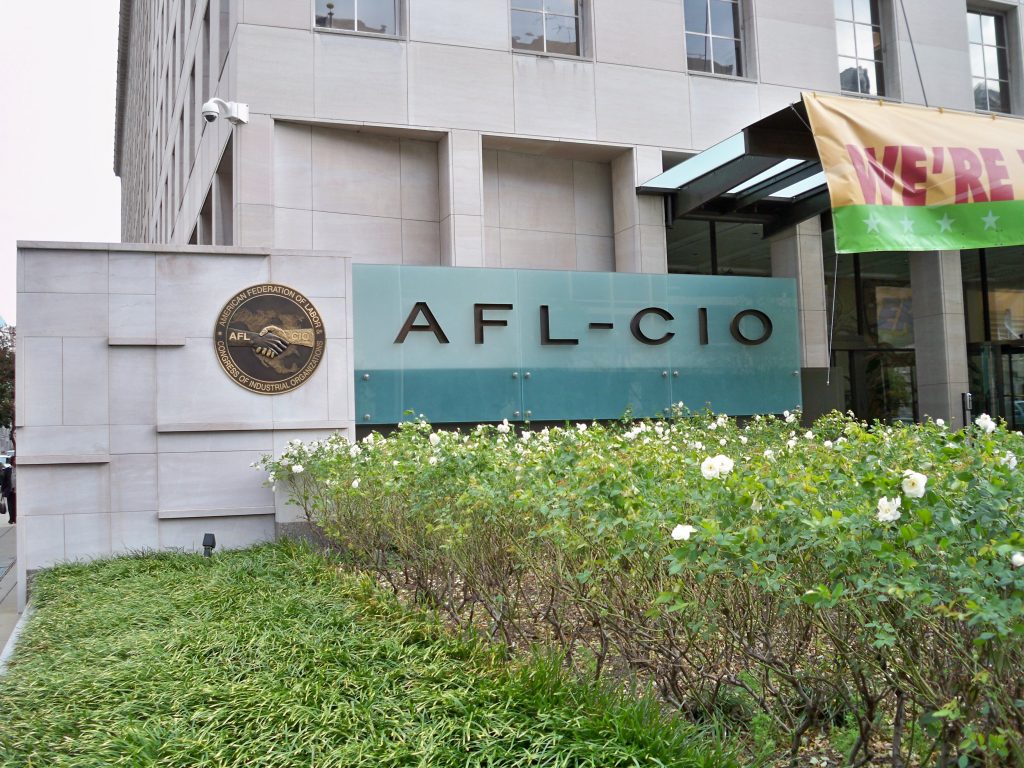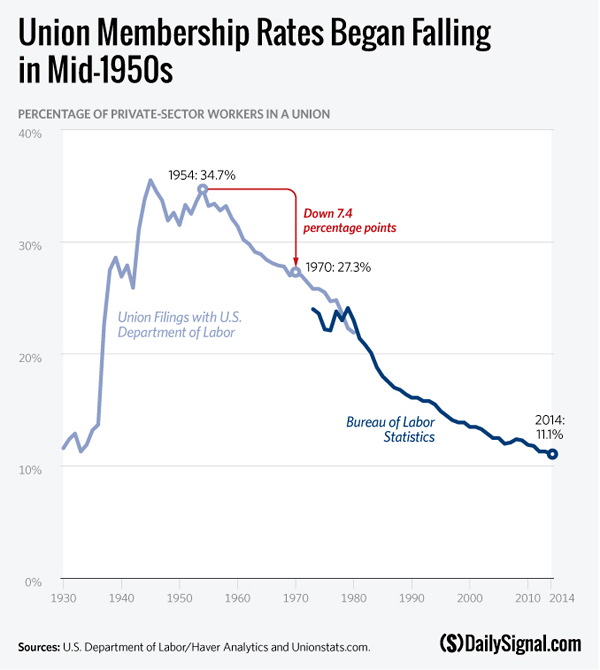
Here are some simple facts about unions for you:

- CORPORATE STRUCTURE—What once started out as grassroots worker organizations nearly 200 years ago, as a whole, today’s unions are structured a lot like major corporations, with union presidents acting like CEOs in many cases.
- MULTI-BILLION DOLLAR INDUSTRY—Unions’ primary source of revenue comes from union members’ dues and agency fees. As an industry, unions rake in over $14 billion each year in union dues and fees.
- NATIONAL UNIONS—There are currently more than 60 national unions throughout the United States. With a few exceptions, the majority of major unions are headquartered in Washington, DC, where union lobbyists and top union brass have easy access to politicians and regulators. On the job, most unions perform their services through “local unions.”
UNIONS IN CRISIS.

- UNIONS IN CRISIS—After peaking in 1945 when unions represented 35.5% of all workers in the United States, unions have been shrinking for more than 50 years. Today, more than 93% of America’s private-sector (non-government) employees are union-free.
- NO-VOTE UNIONS—The vast majority of unionized employees in the U.S. did not choose to become unionized but, after getting a job at a unionized company, are obligated to pay union dues and fees as a condition of employment. In other words, if they do not pay the union, they are fired from their jobs.
UNION CONTROL

- UNION RULES—All unions have a set of rules that union members must adhere to. These rules are found in the union’s constitution. In addition, most local unions have a supplemental rule book called bylaws. Both of these documents are like legal contracts between a union and its members.
- UNION TRIALS—If a union member violates a union’s rules, the union can place him/her on trial. If a member is found guilty at a union trial, members can often be kicked out of the union, have his or her membership suspended, or be fined money.
Don’t turn your right to speak for yourself over to a union without knowing the union’s rules and what the union can put you on trial for.







Add comment